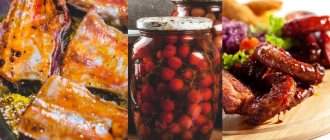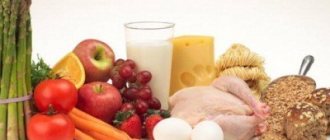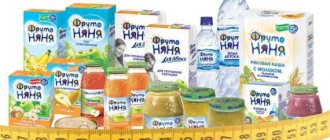General characteristics of dietary table No. 8
Diet No. 8 satisfies a person’s physiological needs for nutrients and energy. The calorie content of the diet is moderately reduced by reducing the amount of simple carbohydrates and animal fats. The diet is enriched with dietary fiber and vegetable fats. Fluids are moderately limited. Food is prepared steamed or boiled without salt. Stewing and baking are acceptable. It is recommended to exclude or limit fried, mashed and chopped foods. Diet No. 8 provides for fractional meals 4–6 times a day.
Features of diet No. 8
Its goal is to restore metabolic processes. It is suitable not only for overweight people, but also for those who often overeat and who are at risk of obesity in the future. The menu principles are based on:
- to reduce daily caloric intake;
- avoiding empty calories and refined foods;
- increasing the volume of coarse fiber;
- limiting salt, fats;
- fractional meals;
- moderate physical activity.
To calculate your daily calorie intake, you can use this convenient calculator:
Before starting a diet, you first remove foods that stimulate your appetite and lead to weight gain. Locked:
- confectionery, white bread;
- sweet fruits - grapes, figs, watermelon;
- pickled, fermented foods, seasonings, sauces;
- alcoholic drinks, carbonated drinks, packaged juices, cocoa;
- fatty dairy products, desserts.
Allowed:
- proteins – veal, poultry, rabbit, lean fish;
- seafood;
- eggs;
- Rye bread;
- vegetables in any quantity with a minimum of oil;
- sweet and sour fruits and berries;
- cereal porridge;
- cheese;
- nuts;
Chemical composition and energy value of dietary table No. 8
Proteins: 70–80 g (including 40 g animal proteins). Fats: 60–70 g (including at least 25 g of vegetable fats). Carbohydrates: 130–150 g (simple carbohydrates excluded). Daily calorie content: 1,300 – 1,600 kcal. Free liquid: 1–1.5 l. Table salt: 3–5 g Vitamins: retinol (A) – 0.4 mg, riboflavin (B2) – 2.2 mg, thiamine (B1) – 1.1 mg, nicotinic acid (B3) – 17 mg, ascorbic acid acid (C) – 150 mg. Macroelements: sodium – 3 g, potassium – 3.9 g, calcium – 1 g, magnesium – 0.5 g, phosphorus – 1.6 g. Microelements: iron – 35 mg. Optimal food temperature: from 15 to 65 degrees Celsius.
Recipes
Diet 8 recipes should contain a minimum of calories, but the dishes should be tasty. Dishes for the week in the Diet 8 menu can be like this:
Vegetable stew
- Four zucchini
- Two bell peppers
- Six tomatoes
- Four potatoes
- Olive oil
Blanch the tomatoes and peel them. We cut the zucchini and potatoes into cubes, and the bell pepper into strips. Heat olive oil in a thick-bottomed frying pan and add vegetables. Fry for 5 minutes, stirring occasionally, then cover with a lid and simmer for 40 minutes.
Steamed carrot soufflé
- Two large carrots
- Two eggs
- Sugar
Grate the carrots on a fine grater. Beat the whites until thick foam. Grind the yolks with sugar. In a separate container, carefully mix all this and place it in a steamer container. Cooking time – 35 minutes.
Vegetarian borscht
- 1 carrot
- 1 potato
- Two handfuls of shredded cabbage
- Two tomatoes
- One beet
Bring one and a half liters of water to a boil and add grated carrots, diced potatoes and cabbage. Separately, boil the grated beets in a small amount of water, strain and add to the soup. Cook until the vegetables are ready, and at the very end of cooking add the tomatoes, previously peeled and cut into cubes.
Recommended products and dishes of the diet table No. 8
Bread: rye, wheat with bran – up to 150 g per day. Soups: vegetarian vegetable, cereal, fruit; milk soups are allowed; 1-2 times a week, allow soup in weak meat or fish broth. Any soup – no more than 1/2 serving per day. In case of severe obesity, avoid soups. Meat dishes: lean beef and veal, as well as turkey, chicken, and rabbit, boiled in pieces. Fish dishes: low-fat varieties of fish, boiled in pieces; Seafood up to 200 g per day is recommended. Side dishes: cereals are limited (used only for soups, mainly buckwheat, pearl barley, barley); Any vegetables, raw or boiled, are recommended; limit potatoes, beets, carrots, green peas. Dairy products: milk, low-fat cottage cheese, any fermented milk drinks; sour cream – limited in dishes. Eggs: no more than 1 egg per day in any form except fried. Appetizers: vegetable salads from fresh, soaked, pickled vegetables. Sauces: vegetable (including tomato), dairy. Sweet dishes: any fruits and berries in any form; sugar is excluded, substitutes are used; Compotes and jelly are allowed. Drinks: weak tea, rose hip decoction, unsweetened juices. Fats: fresh vegetable oil.
Menu for every day
The Pevzner table for obesity does not imply restrictions on food intake. Meals, on the contrary, are frequent and small, so that a person does not feel hungry and does not have breakdowns. Every 2-3 hours you need to eat small portions of low-calorie dishes, 5-6 meals per day.
Sample menu for effective weight loss for a week:
Monday
- Breakfast: 2 soft-boiled eggs, fresh cabbage salad, tea;
- Snack: pear, glass of homemade yogurt;
- Lunch: okroshka with chicken fillet, bread with cheese;
- Afternoon snack: cranberry mousse;
- Dinner: baked sea bass with vegetables.
Tuesday
- Breakfast: buckwheat with steam cutlet, tea;
- Snack: apple, glass of curdled milk;
- Lunch: pickle, carrot pancakes;
- Afternoon snack: milkshake;
- Dinner: salad of boiled squid and onion.
Wednesday
- Breakfast: oatmeal with berries, weak coffee;
- Snack: stewed carrots with low-fat cream;
- Lunch: vegetable soup with buckwheat, stewed cabbage;
- Afternoon snack: cranberry juice;
- Dinner: vinaigrette, dried fruit compote.
Thursday
- Breakfast: cottage cheese with black currants, sea buckthorn juice;
- Snack: ½ grapefruit;
- Lunch: sauerkraut cabbage soup, boiled beef;
- Afternoon snack: raspberry jelly;
- Dinner: baked chicken breast with vegetable side dish.
Friday
- Breakfast: pumpkin porridge with brown rice and milk;
- Snack: salad with fresh cabbage and herbs, seasoned with sour cream;
- Lunch: vegetable broth, steamed veal meatballs with Jerusalem artichoke salad;
- Afternoon snack: a glass of fresh apple and carrot juice;
- Dinner: stewed salmon with vegetables, lingonberry jelly.
Saturday
- Breakfast: cheese sandwich, unsweetened tea with lemon;
- Snack: orange;
- Lunch: fish soup, millet porridge with fresh vegetables;
- Afternoon snack: beetroot and carrot salad with nuts;
- Dinner: boiled shrimp with fresh cucumber.
Sunday
- Breakfast: cottage cheese with blueberries;
- Snack: baked apple;
- Lunch: solyanka, cabbage cutlets in sour cream sauce;
- Afternoon snack: steamed hake with carrots and onions;
- Dinner: cauliflower and potato stew.
Every day, before a couple of hours of sleep, you need to drink a glass of kefir, fermented baked milk or yogurt.
The Pevzner diet has effectively proven itself as a gentle nutrition system for children who have been diagnosed with type 2 diabetes and the percentage of adipose tissue is significantly higher than normal. The diet of young patients is no different from the adult menu, except for the size of the portions.
Diabetes with obesity: menu nuances
Table No. 8 for obesity recommends that patients diagnosed with diabetes mellitus have a fasting day once a week with an energy value of 400-8000 calories.
The most popular diet No. 8 according to Pevzner are:
- Meat fasting day , which allows 500 grams of boiled lean beef and 500 grams of fresh vegetables;
- Fruit fasting day , when the patient is allowed any fruits and berries, except bananas, grapes and dates;
- Cottage cheese fasting day , during which you can consume only 500 grams of low-fat cottage cheese and 500 milliliters of kefir.
Excluded foods and dishes of the diet table No. 8
From the diet you should exclude flour products made from premium wheat flour, baked goods, pasta, rice, semolina and oatmeal, fatty meat, lard, liver, cooking fats, spicy or fatty snacks, seasonings and sauces, any herbs and spices, strong meat, fish and mushroom broths. Also excluded are pickles, smoked foods, canned food, marinades, fatty dairy products (including cheeses), chocolate, cocoa, coffee, jam, honey, confectionery, legumes, and alcoholic beverages.
Table No. 8 (Diet for obesity)
Indications:
obesity as a primary disease or concomitant with other diseases that do not require special diets.
Purpose of diet number 8: impact on metabolism to eliminate excess fat deposits.
General characteristics of diet No. 8: reducing the caloric content of the diet due to carbohydrates, especially easily digestible ones. and to a lesser extent - fats (mainly animal) with normal or slightly increased protein content. Restriction of free fluid, sodium chloride and appetite-stimulating foods and dishes. Increased dietary fiber content. Dishes are prepared boiled, stewed, baked. Fried, pureed and chopped products are undesirable. They use sugar substitutes for sweet dishes and drinks (xylitol and sorbitol are taken into account in the calorie content of the diet). The food temperature is normal.
Chemical composition and calorie content of dietary table No. 8: carbohydrates - 150 g; proteins - 90-110 g (60% animal), fats - 80-85 g (30% vegetable), calories - 1700-1800 kcal; sodium chloride (salt) - 5-6 g; free liquid - 1-1.2 l.
Diet No. 8: 5-6 times a day with enough volume to feel full.
Recommended and excluded foods and dishes:
- soups. Up to 250-300 g per dose. From various vegetables with a small addition of potatoes or cereals; cabbage soup, borscht, okroshka, beetroot soup. 2-3 times a week, soups in weak low-fat meat or fish broth with vegetables and meatballs. And they include: dairy, potato, cereal, legumes, with pasta;
- bread and flour products. Rye and wheat bread made from wholemeal flour, protein-wheat and protein-bran bread - 100-150 g per day. And they include: products made from premium and 1st grade wheat flour, butter and puff pastry;
- meat and poultry. Up to 150 g per day. Low fatness beef, veal, rabbit, chickens. turkey, limited - lean pork and lamb - mostly boiled, as well as stewed; baked in large and small pieces. The meat is fried after boiling. Beef jelly. Beef sausages. And they include fatty meats, goose, duck, ham, sausages, boiled and smoked sausages, canned food;
- fish. Low-fat types up to 150-200 g per day. Boiled, baked, fried. Sea products. And they include: fatty species, salted, smoked, canned fish in oil, caviar;
- dairy products. Low-fat milk and fermented milk drinks. Sour cream - in dishes. Low-fat cottage cheese with 9% fat content (100-200 g per day) - natural and in the form of cheesecakes and puddings. Low-fat cheeses - limited. And they include: fatty cottage cheese, sweet cheeses, cream, sweet yogurt, fermented baked milk, baked milk, fatty and salty cheeses;
- eggs. 1-2 pieces per day. Hard-boiled, protein omelettes, omelettes with vegetables. And they include: fried;
- cereals. Limited for adding to vegetable soups. Crumbly porridges from buckwheat, pearl barley, and barley due to the reduction of bread. And they exclude: other cereals, especially rice, semolina and oatmeal, pasta, legumes;
- vegetables. They are used widely, in all forms, some of them always raw. All types of cabbage, fresh cucumbers, radishes, fresh herbs, zucchini, pumpkin, tomatoes, turnips are desirable. Sauerkraut - after washing. Limit dishes from potatoes, beets, green peas, carrots, rutabaga (in total up to 200 g per day), as well as salted and pickled vegetables;
- snacks. Salads from raw and pickled vegetables, vinaigrettes, vegetable salads with boiled meat and fish, seafood. Jellied fish or meat. Lean ham. And they include: fatty and spicy snacks;
- fruits, sweet dishes, sweets. Fruits and berries of sweet and sour varieties, raw and boiled. Jelly and mousses based on methylcellulose, xylitol, sorbitol. Unsweetened compotes. And they include: grapes, raisins, bananas, figs, dates, very sweet varieties of other fruits, sugar, confectionery, jam, honey, ice cream, jelly;
- sauces and spices. Tomato, red, white with vegetables, mild mushroom; vinegar. And they include: fatty and hot sauces, mayonnaise, all spices;
- beverages. Tea, black coffee and coffee with milk. Low-sweet fruit, berry, vegetable juices. And they include: grape and other sweet juices, cocoa;
- fats. Butter (limited) and vegetable oils - in dishes. And they include: meat and cooking fats.
Sample diet menu No. 8.
First breakfast: vegetable salad with vegetable oil, low-fat cottage cheese, tea.
Second breakfast: fresh apples.
Lunch: vegetarian borscht with sour cream (half portion), boiled meat, stewed cabbage with vegetable oil, dried fruit compote without sugar (xylitol).
Afternoon snack: low-fat cottage cheese with milk.
Dinner: boiled fish, vegetable stew, tea.
At night: low-fat kefir.
PS Before switching to a therapeutic diet, be sure to consult your doctor!
In contact with










